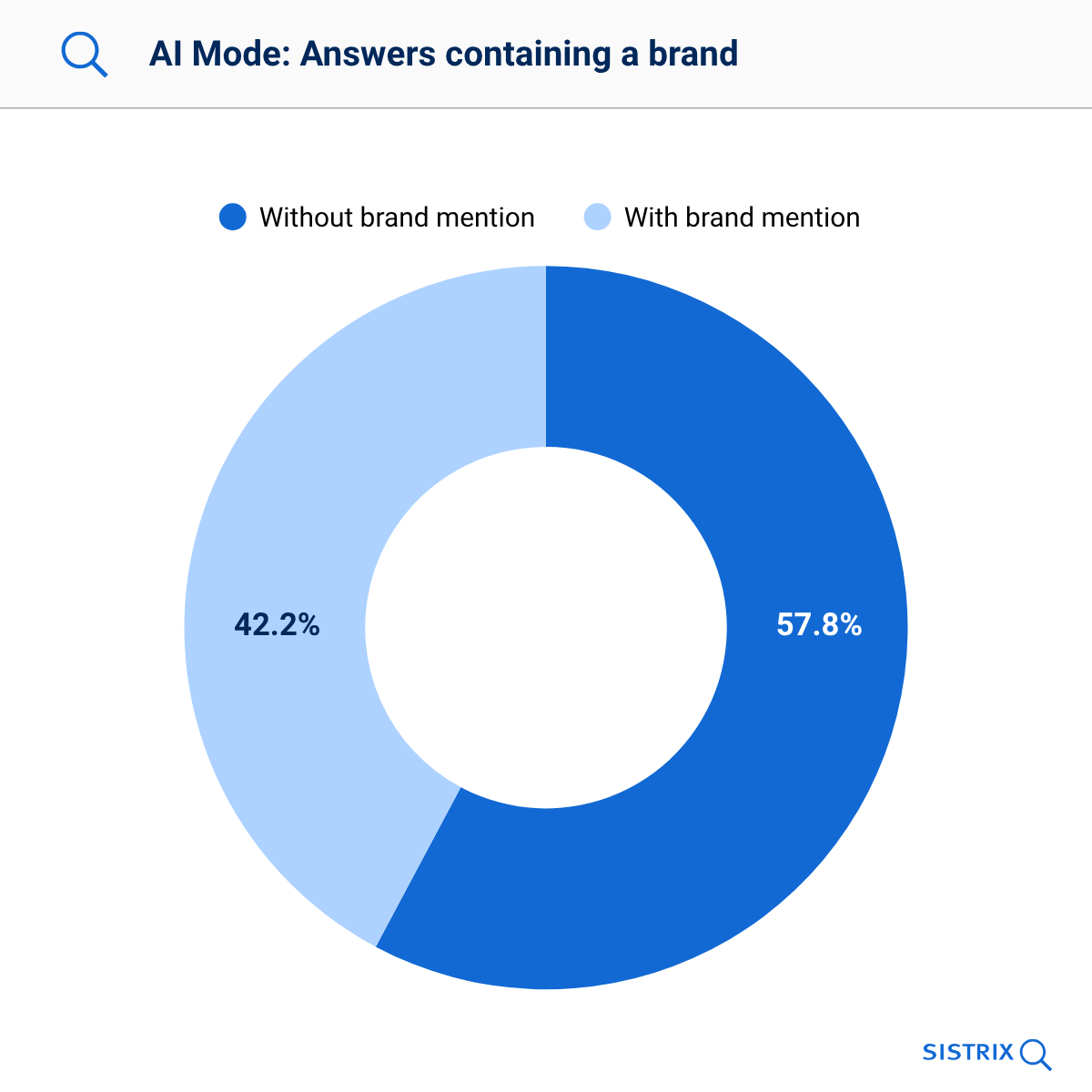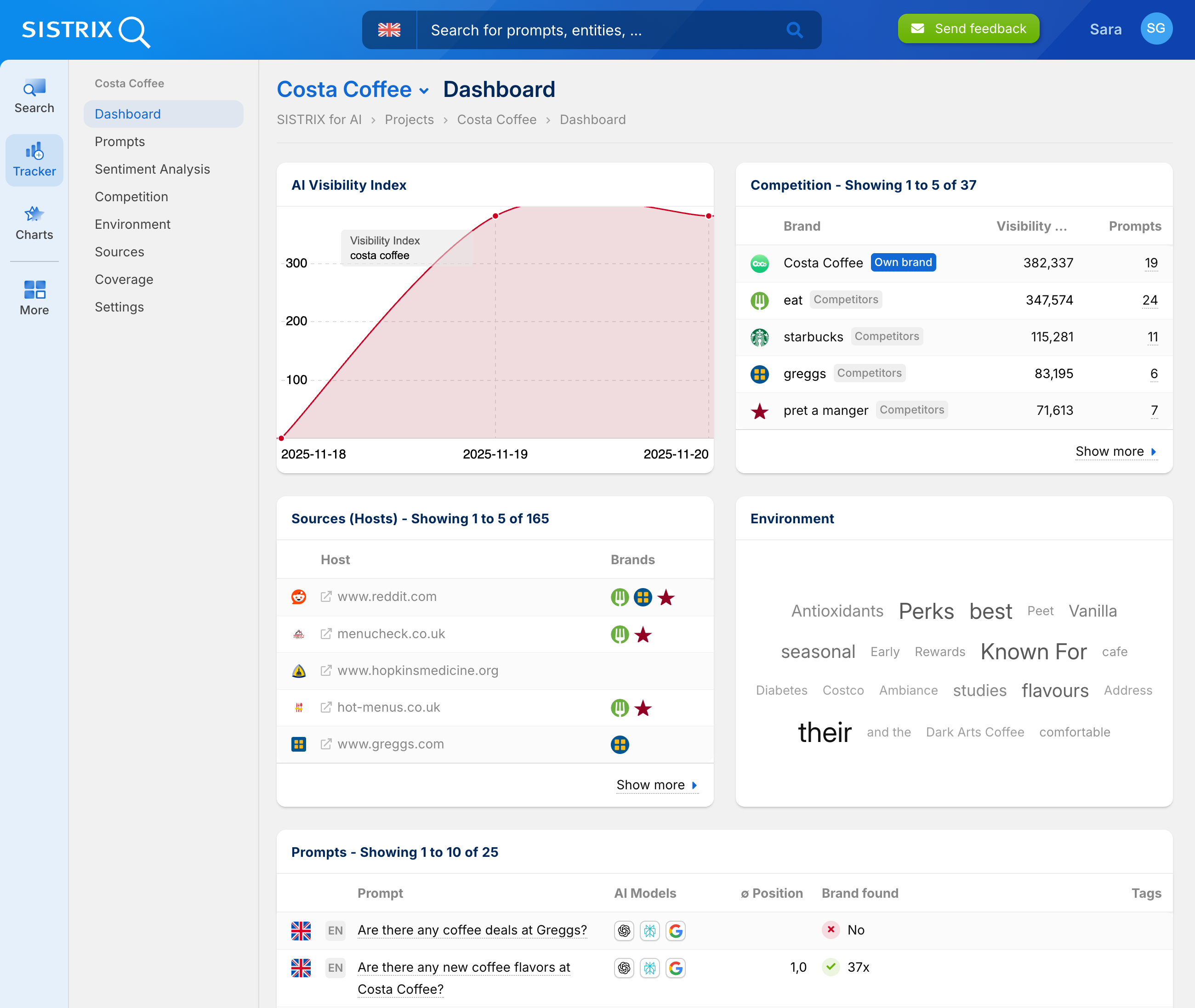Google search is once again facing a fundamental change. With AI Mode, which is currently rolled out as an option to users in many countries, not only does the appearance of search results change, but also the way content is discovered and processed. Read on to find out about AI Mode and how it affects search marketing.
Discover how SISTRIX can be used to improve your search marketing. Use a no-commitment trial with all data and tools: Test SISTRIX for free
With Google now deploying its own large AI system, it is no longer possible to ignore AI-powered search systems, even for those who previously wanted to avoid them. For companies, the question now is: What does this mean specifically for visibility, content, and strategy? And how can visibility in AI Mode be measured?
What is AI Mode?
AI Mode is Google’s new search feature, available at https://www.google.com/ai and directly within the Google search interface. It is based on Gemini, a multimodal language model with high processing depth. Users can enter questions, interact directly with AI Mode, or upload images. Search results are no longer just lists of 10 website links, but AI-generated answers that are structured and content-rich.

AI Mode combines elements of a chatbot with classic web search. It uses the capabilities of Google’s language models as well as various backends such as web search, image search, and the Knowledge Graph to deliver understandable and verifiable AI search results. (Johannes Beus – Founder, SISTRIX.)
What changes for SEO now
Google positions AI Mode not as a supplement like the AI Overviews, but as an independent form of search. In practice, this is reflected in several changes that have immediate consequences for SEO and content strategies.
- Users interact in dialogue. They ask an initial question, receive an AI-generated answer, and can follow up directly. This creates a search logic that allows for much more contextual relevance but disrupts traditional SERP structures.
- The AI thinks ahead. When asking about a product, concept, or problem, users also receive information about related aspects. The system anticipates likely follow-up questions and answers them immediately. For content providers, this means that relevance is generated not only by the initial query but also by adjacent topic areas.
- Pages provide information, but not necessarily the click. Content is processed and cited by the AI, often without the user directly visiting the source. The zero-click rate thus rises significantly, along with the challenge of measuring visibility meaningfully and converting clicks.
- Unlike the classic ten blue links in Google search, not every query automatically includes a brand. Less than half of all AI Mode answers contain any brand reference at all. In only 42.2 percent of prompts did we measure at least one brand in the answer.

Google emphasises that no special measures are required to be visible in AI Mode or AI Overviews. If a site is found in classic search, it generally meets the requirements for AI answers—provided the page is indexed, technically accessible, and discoverable in the SERPs with a snippet.
The challenge of visibility
A central problem for SEOs is measurability. Visibility in AI Mode cannot currently be tracked clearly in Google Analytics or Search Console. There is no separate “AI Mode” source, no counting of citations, and no differentiation between clicks and references. This changes how success is measured, as visibility increasingly occurs without direct traffic.
SISTRIX already allows you to track your visibility in AI answers. In the AI/Chatbot Beta, a project can be created by entering a brand. SISTRIX automatically identifies relevant prompts and a competitor environment. This makes it possible to see in which answers your brand appears, which content is used as a source, and how mentions develop over time. The visibility index shows whether presence is increasing or decreasing and which competitors are cited more frequently. This way, it becomes clear which content works and where optimisation potential exists.

AI Overviews in Google Search can also be analysed specifically with SISTRIX. Using the filter in the keyword table, all queries for which Google displays a generative answer become visible. In the AI Overviews section, it additionally shows for which keywords your own domain is cited as a source and at what position within the box it appears. This allows you to see which topics Google is already using your content for and where visibility is still lacking. Comparing this with organic rankings shows whether additional presence is being generated or existing rankings are being replaced.

Now is the right time to align content with AI answers. Those who measure and optimise early will remain visible not only in the rankings but also in the systems’ responses. Test SISTRIX free for 14 days and analyse where your brand is already mentioned and where there is still potential.
Who is cited in AI Mode
Since the launch of AI Mode we have analysed and evaluated millions of responses. A clear pattern emerges: Google still references external sources, but clearly prefers its own offerings.